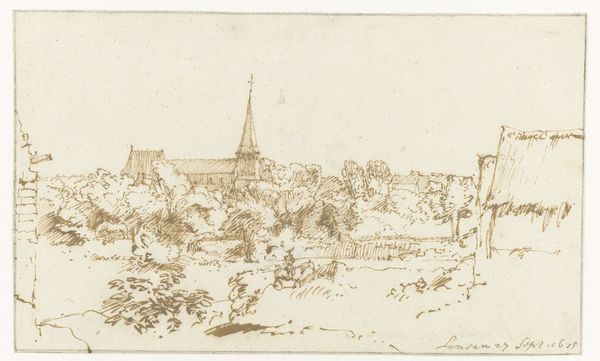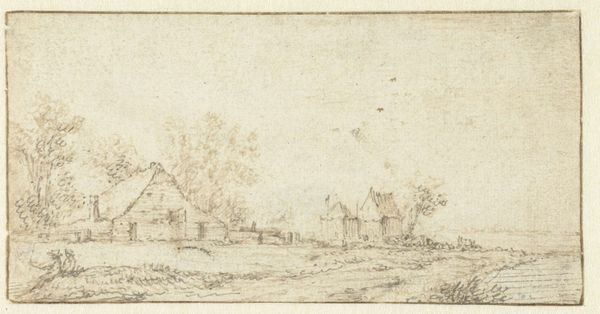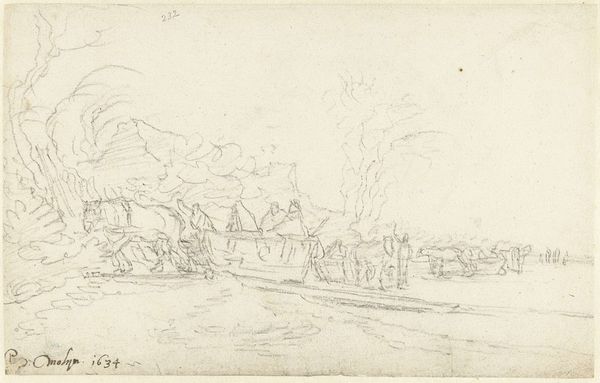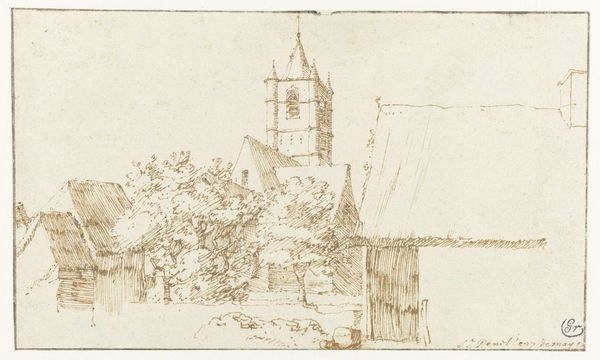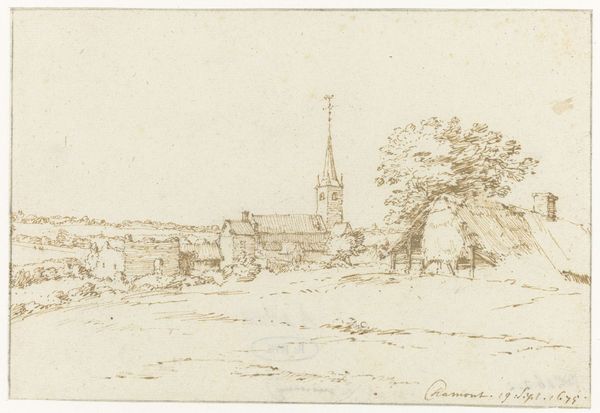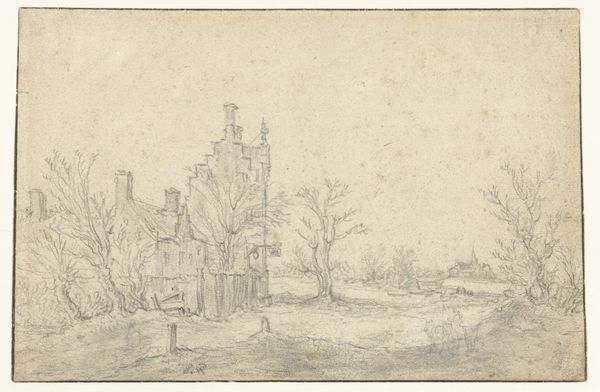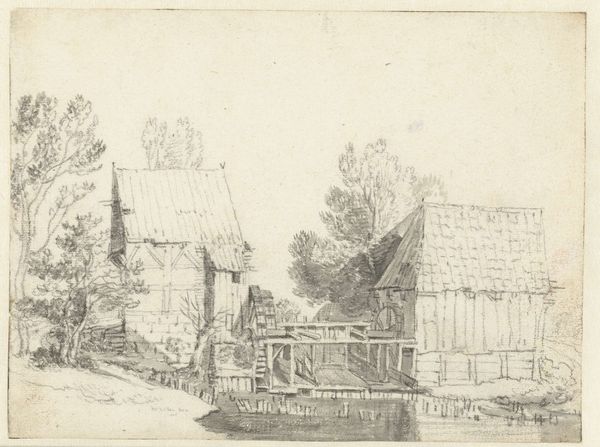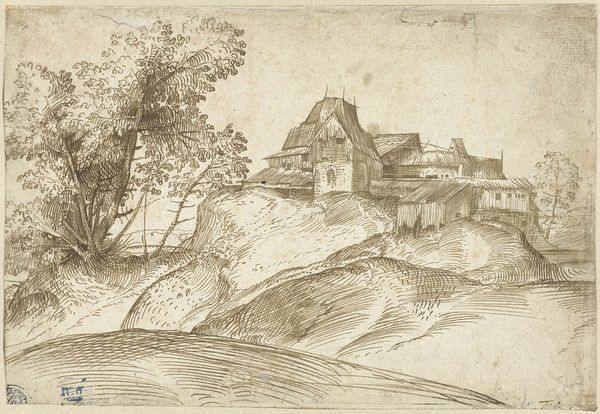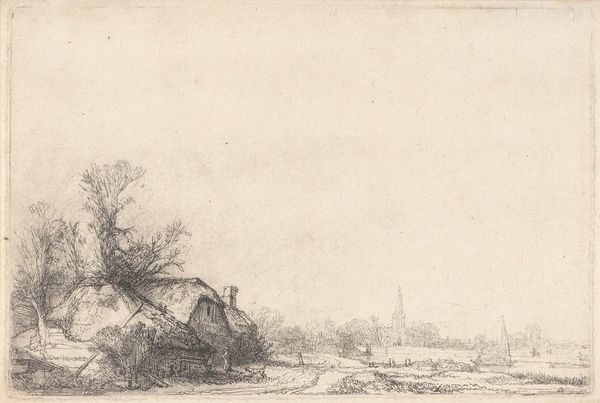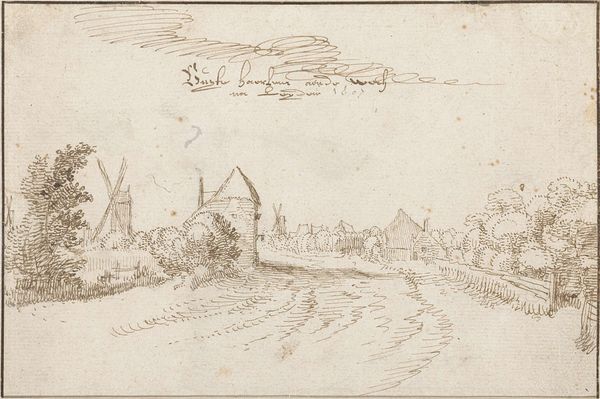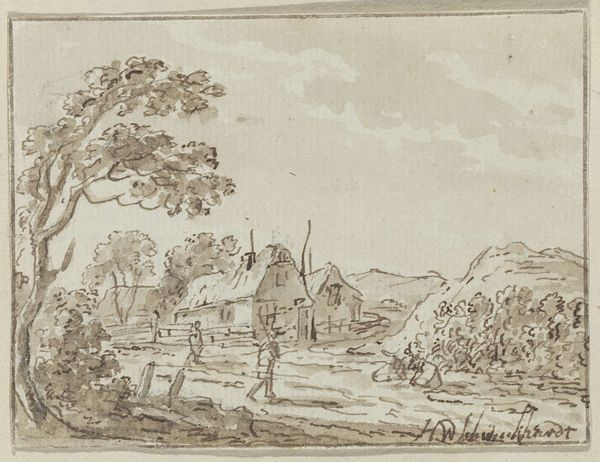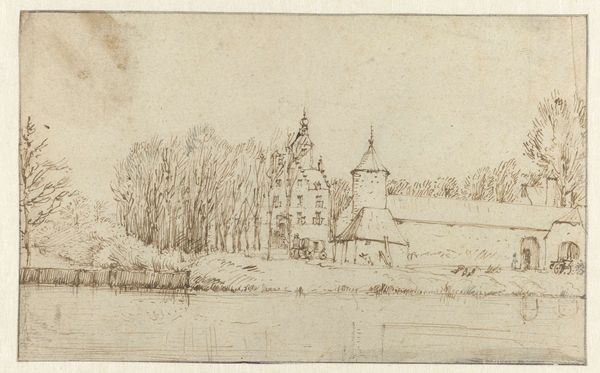
drawing, ink, pen
#
drawing
#
ink drawing
#
dutch-golden-age
#
pen sketch
#
pencil sketch
#
landscape
#
ink
#
pen
Dimensions: height 112 mm, width 213 mm
Copyright: Rijks Museum: Open Domain
Curator: Welcome. We're looking at "Onnaing," a pen and ink drawing attributed to Constantijn Huygens, possibly from 1676. Editor: My first impression is a sort of pastoral melancholy. The sepia tones and delicate lines give it a wistful, almost dreamlike quality. There is so much light here and depth given the nature of the medium, too. Curator: That dreamlike quality comes partly from the subject itself—a rural village, depicted with that distinctive Dutch Golden Age approach. Notice how the church steeple becomes the focal point of the entire composition. Churches in such drawings at that time usually represented not just religious life but also civic identity, providing an impression about the importance of that church's role in the surrounding community. Editor: Indeed, but observe how the artist balances the architectural structure of the church with the more organic forms of the surrounding trees and figures. This is accomplished by a strong, but controlled contrast of light and dark areas. Look, for instance, how the strokes of ink change and vary across the depiction of people along the path in comparison with the rigid straight lines around the rooftops. The drawing's energy arises precisely from those arrangements. Curator: And those figures, deliberately placed and distributed throughout the scene. The drawing offers an insight into 17th-century Dutch society where human figures become part of a balanced interplay between culture and nature. The road creates a passage right into the heart of the drawing's subject itself and the drawing almost becomes like an image of life's road. Editor: And note also the bare foreground of the drawing with figures casually strewn across. We find figures who exist inside and outside the center of this activity on the road leading back to town. That choice pushes the eye immediately towards the scene and serves the perspective of the entire village depiction quite powerfully. Curator: It's a seemingly simple landscape, but rich with cultural and historical context. Editor: I see now a clear tension, maybe intentional, maybe not, created across various aspects of this interesting image and that enlivens it so successfully for viewers centuries later.
Comments
No comments
Be the first to comment and join the conversation on the ultimate creative platform.

